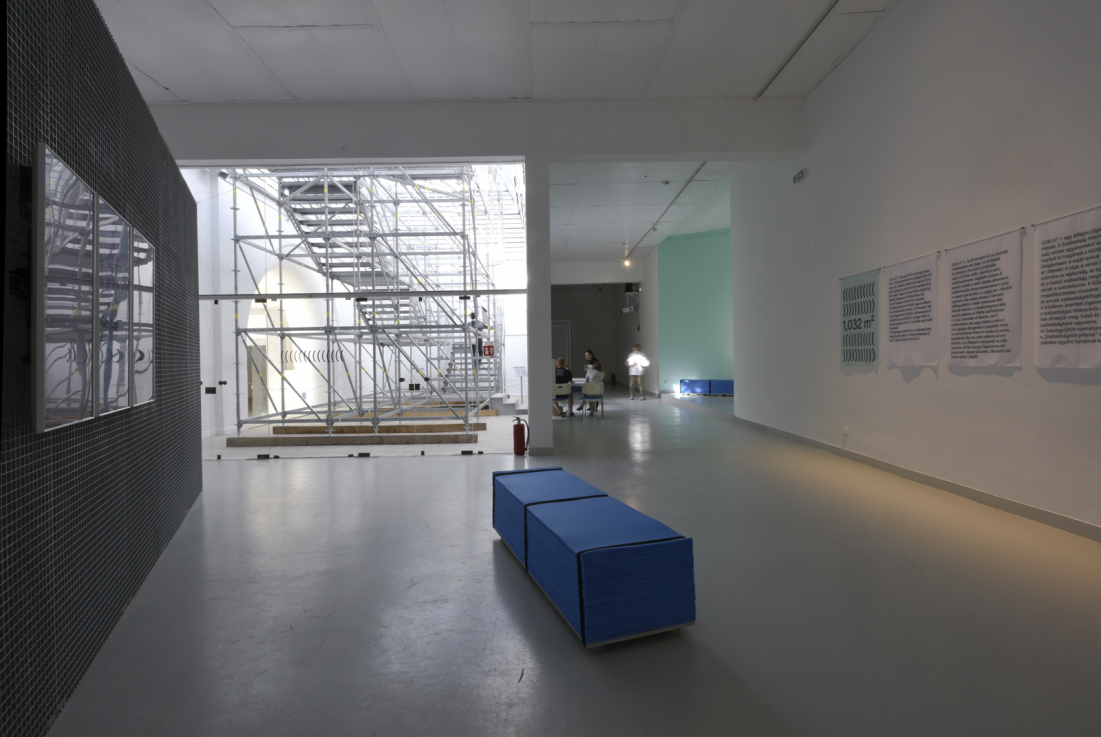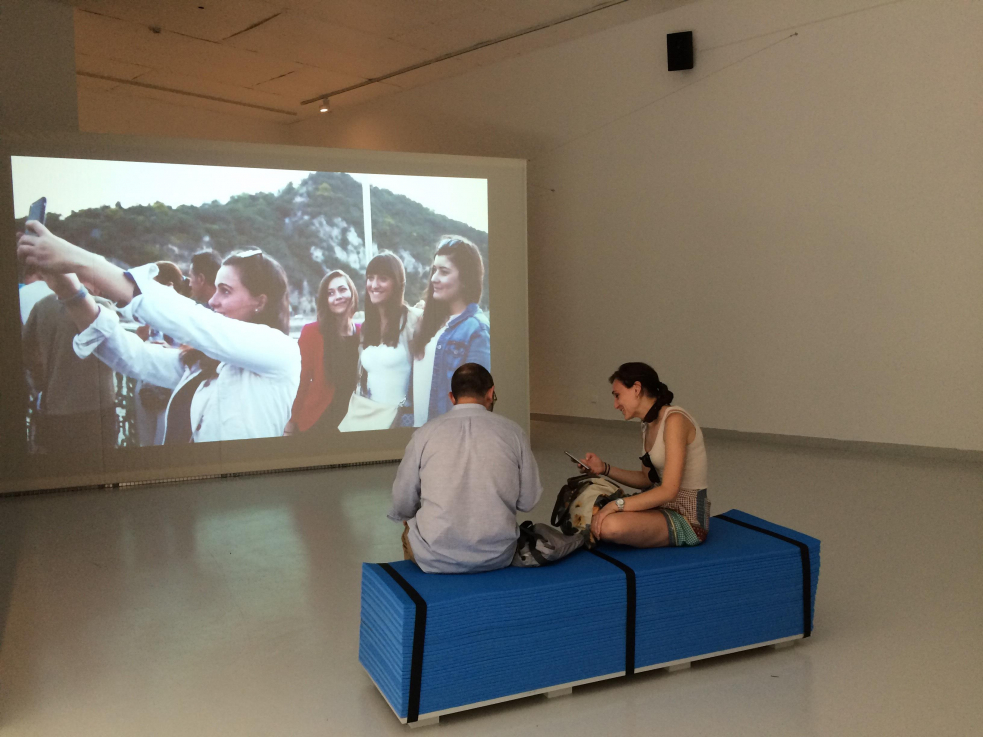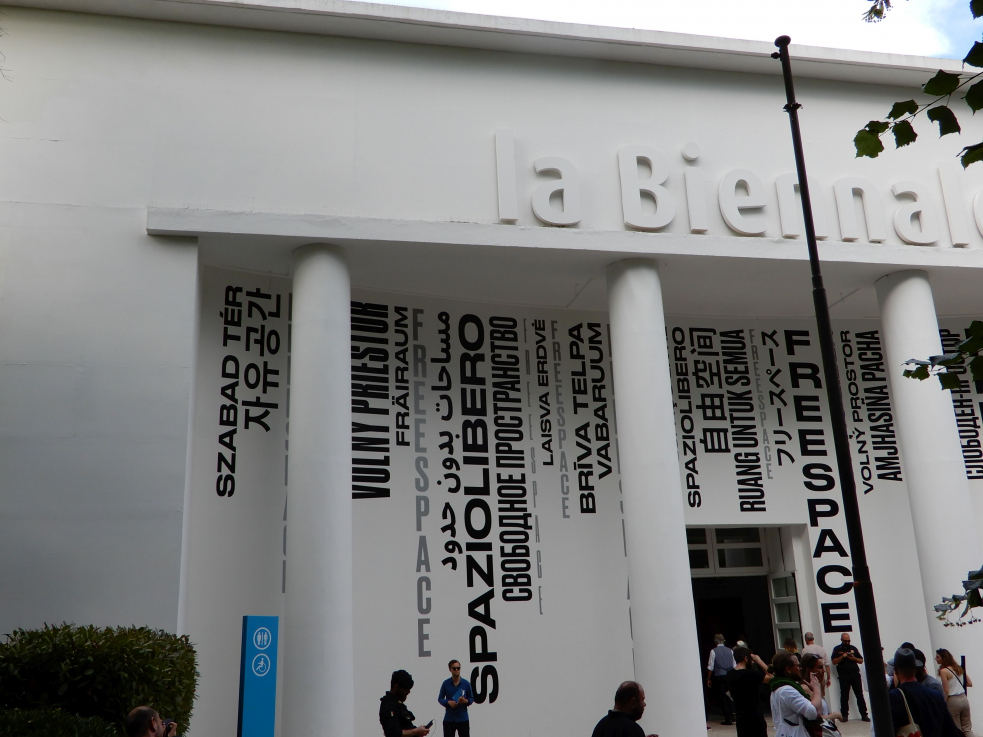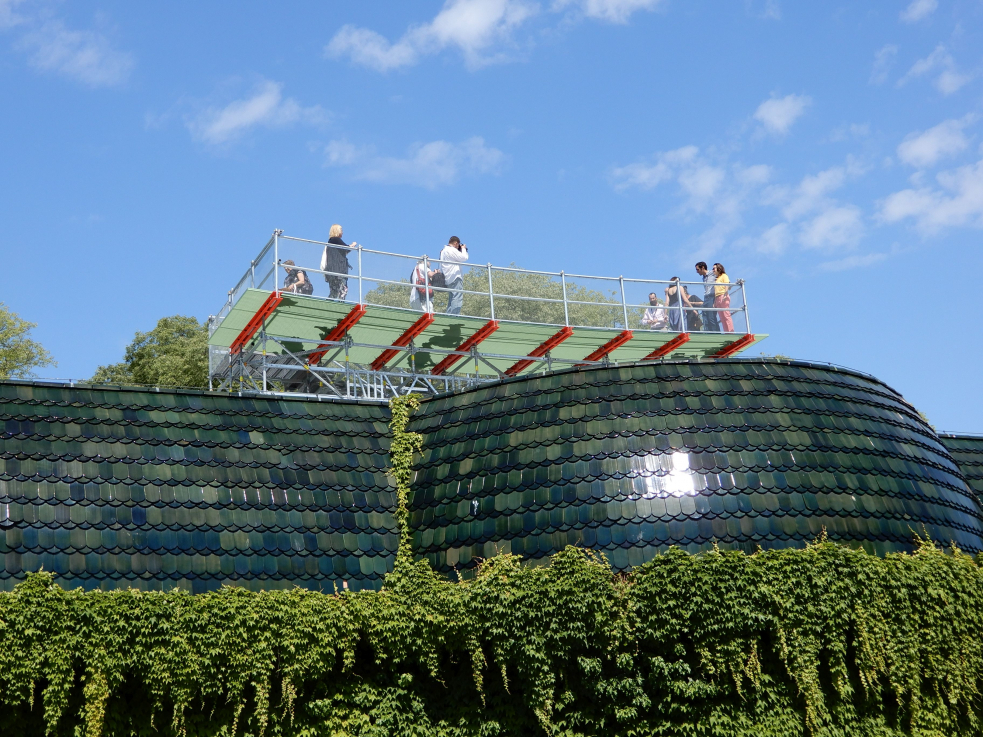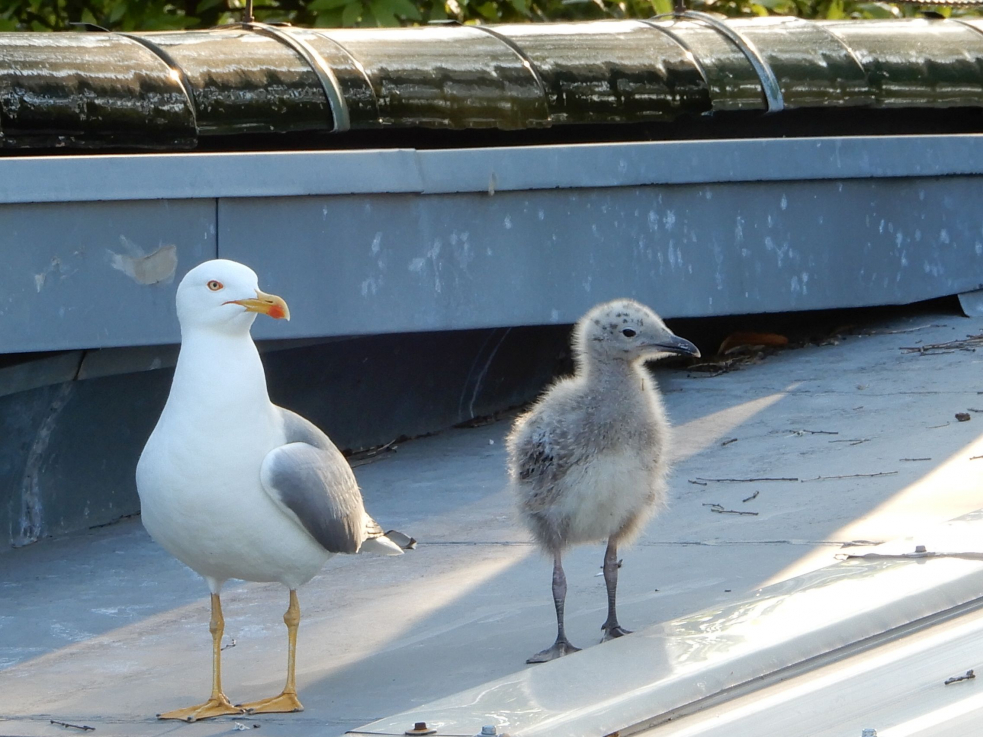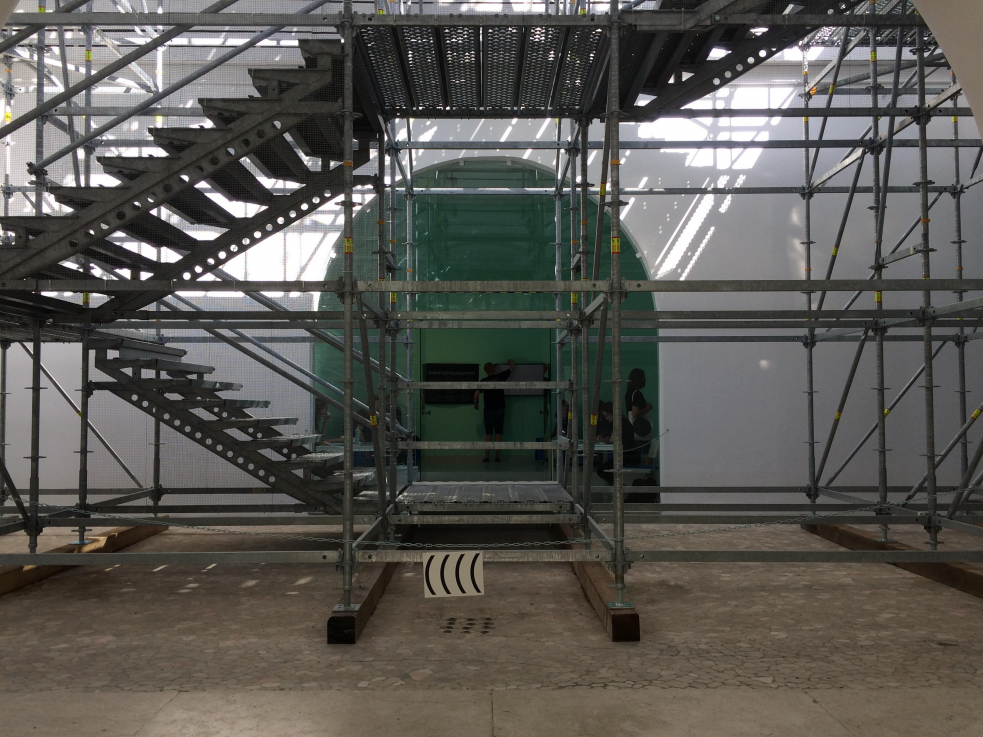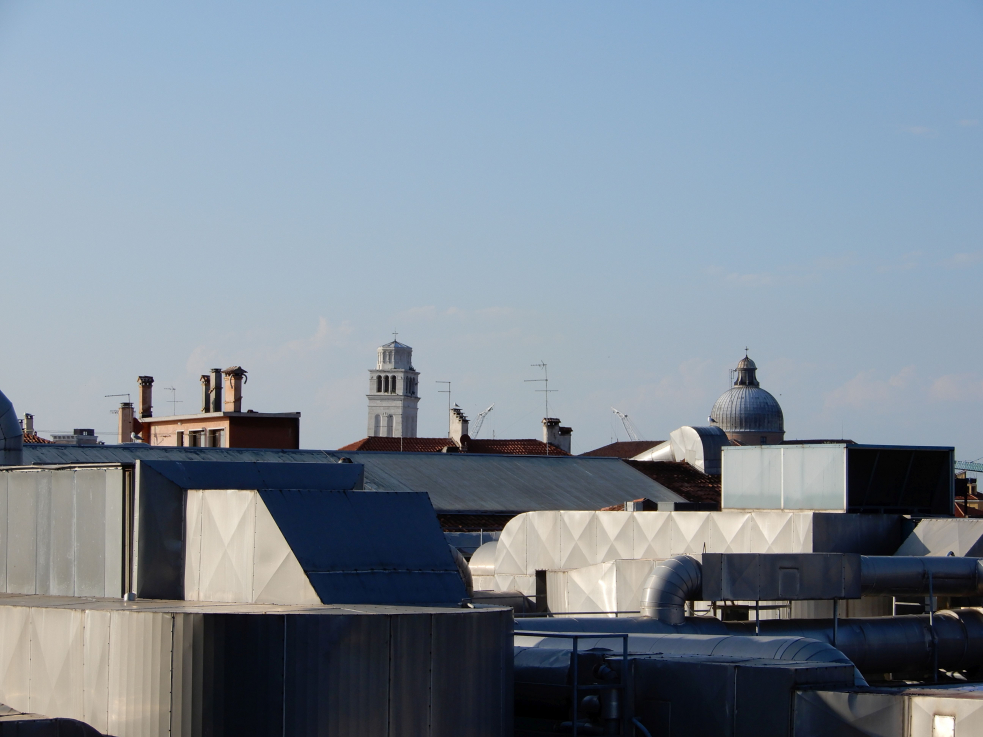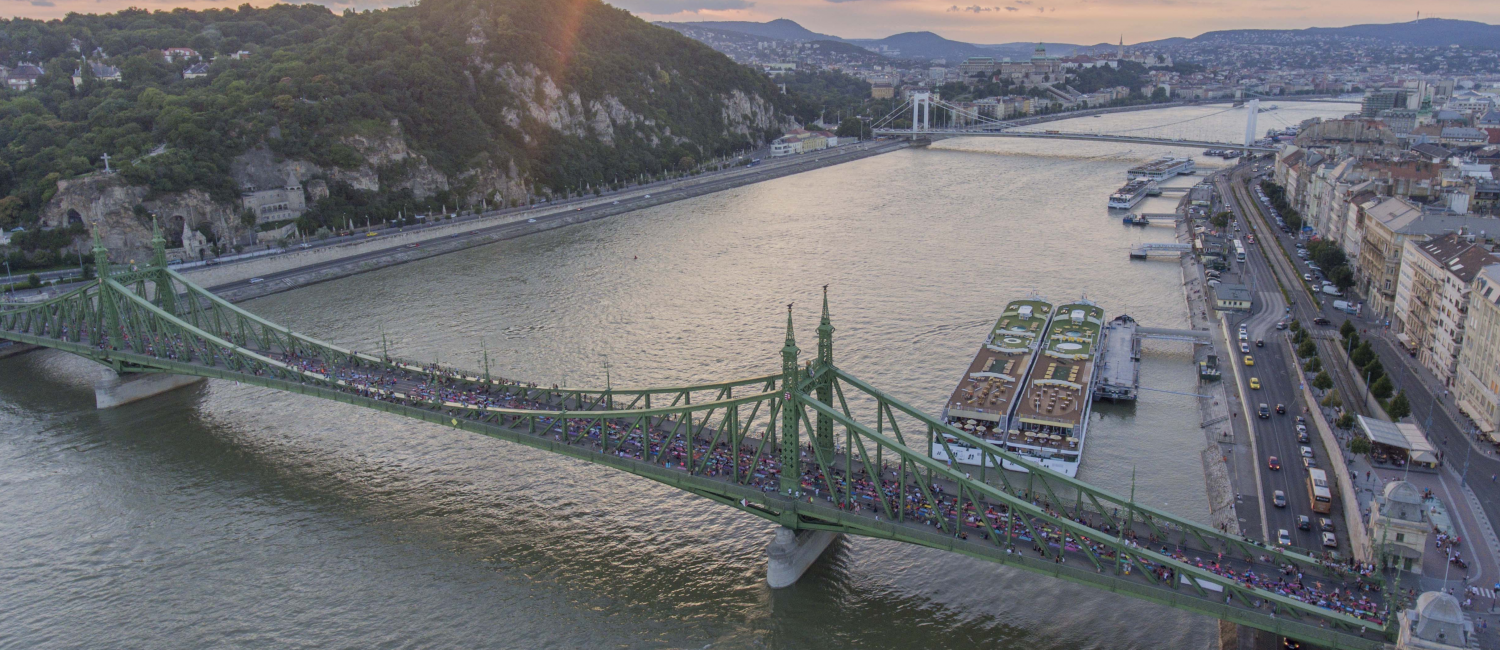PAVILION OF HUNGARY
at the 16th International Architecture Exhibition – La Biennale di Venezia
26 May – 25 November, 2018
Venezia, Giardini
LIBERTY BRIDGE – NEW URBAN HORIZONS
National Commissioner: Julia Fabényi
Curator: Kultúrgorilla (Júlia Oravecz, Anna Göttler, Éva Tornyánszki)
Architects: Studio Nomad (Bence Pásztor, Soma Pongor, Dávid Tarcali)
The exhibition of the Hungarian Pavilion this year aims to provide new horizon to the concept of free space through an exceptional urban episode in Budapest. Liberty Bridge – New Urban Horizons tackles fundamental issues of urban development. The symbolic installation invites visitors to explore the building like never before.
For this year’s exhibition of the Hungarian Pavilion, two creative collective, the curator team of Kultúrgorilla and the architects of Studio Nomad joined their forces to investigate, how a historic bridge can become spontaneously a vibrant centre of local communities.
In 2016, one of the oldest Danube-bridges of Budapest, the Liberty Bridge became car-free due to an infrastructural development in the neighbourhood. Citizens, mostly millennials immediately put the road and tram tracks to creative use, and re-imagined the historic place. The construction turned into street furniture, hosting picnics, grill-parties, yoga classes.
Though the crowd had no demand, the ”occupants” reframed the relation of city and liberty, formal and informal use, public and private spaces.
The curators choose this episode to tackle fundamental issues of urban development: What does a free public space represent today? How can a bridge or any built structure act as a medium of freedom? How can we change our own identity by transforming our city?
The exhibition invites visitors to relive the experience of creating both spatial and inner freedom with a truly engaging architectural installation: we can literally gain new perspectives by accessing the heritage building of the pavilion. The exhibition also sheds light on the process that led to the bottom-up placemaking on the bridge, and examines how the relation to public spaces changed in the last 30 years, after the political changes.
Project supported by the Hungarian Ministry of Human Capacities
Web:
Press Office:
Gabriella Rothman +36 20 331 4033, rothman.gabriella@ludwigmuseum.hu
Zsuzsanna Fehér +36 30 619 1710, feher.zsuzsanna@ludwigmuseum.hu
